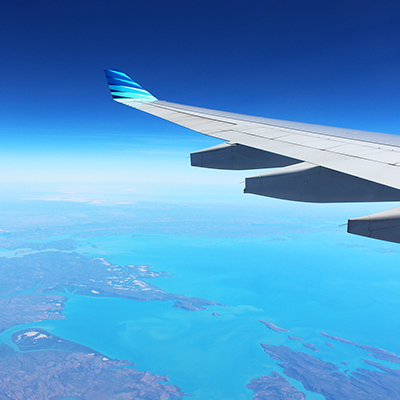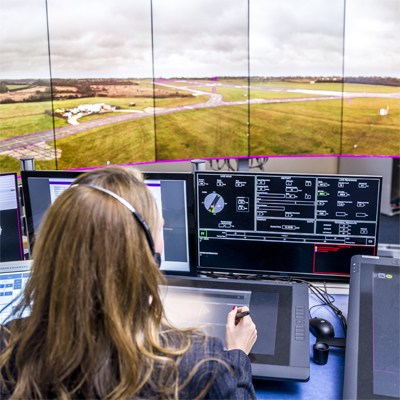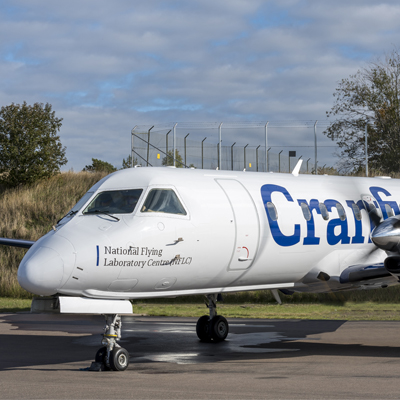Our five-part ‘future of flight’ series looks at how aircraft, airspace, airports and airlines might change over the coming years, in response to current and future challenges.
Between the ongoing disruption of Covid-19, and the need to ‘build back better’ in order to meet ambitious net zero goals – many of us are wondering what the future of the aerospace and aviation sectors might look like. During the Reimagining our aerospace sector in 25 years’ time webinar in December 2020, a panel of industry experts shared their thoughts on the future of the industry. In this series, we share their insights and outline some of the research Cranfield is undertaking to drive innovation and positive change in the sector.
The first article in the series discussed the aircraft of the future – the new architectures and concepts that could improve both sustainability and air mobility. Catch up here if you missed it. This second part in the series outlines the need for innovation in how we manage our airspace, in order to implement these new aircraft technologies.
Airspace: digitalisation and integration to facilitate the adoption of new technology
Developments in the types of aircraft we travel in and how these craft operate will require new ways of managing our airspace to ensure both efficiency, and safety.
When we think about what aerospace and aviation might look like in 25 years’ time, Dr David Paisley (PhD Aerodynamics 1982), Technical Fellow/Product Development, Boeing emphasised that we need to think about our desired outcomes. One of these would be to open up air travel to everyone. According to Dr Paisley, 80% of the world have never flown on an airplane. Different modes of air travel on the horizon and new technologies/methodologies, such as vertical take-off and landing (VTOL,) could enable developing countries to bypass the massive infrastructure investments that would currently be required and therefore open up air travel to more people.
However, MSc Thermal Power alumna and PhD researcher at Cranfield’s Propulsion Engineering Centre, Chana Sais, outlined that one of the key enablers for such new technologies to be implemented is managing infrastructure and air traffic management. Developments in technology, such as unmanned aircrafts and VTOL aircrafts travelling in low-altitude airspace, will dramatically change how we travel, and so require developments in the way we manage our airspace – requiring airspace integration and new frameworks to ensure best use of these new modes of air transport.
Modernising air traffic management
This need to modernise air traffic management to facilitate new exciting opportunities offered by new classes of aircraft and new routes is a strong focus at Cranfield. The air traffic control simulator links with other flight simulators, enabling pilots and air traffic controllers to understand the impact of different strategies on airspace users. Furthermore, the Digital Air Traffic Control Centre – provided by Saab Digital Air Traffic Solutions - enables smarter approaches to air traffic control by digitising and integrating airport functions.
Making use of both manned and unmanned aircraft offers exciting potential to revolutionise both the way we travel, and the way we transport goods such as medicine. However, doing so requires careful consideration of how to integrate low-altitude mixed flights. The National Beyond visual line of sight Experimentation Corridor (NBEC) is being developed by a consortium of partners to address this challenge, providing a safe and managed environment for drone and airspace experimentation to work towards the integration of unmanned and manned aircraft. Research facilitated by NBEC could help to accelerate the adoption of a nationwide capability for low-altitude unsegregated flight services in the UK – ranging from personal taxiing and unmanned freight movement, to time-critical delivery support for the emergency services.
Stay tuned for the next article in the series coming soon, focusing on airports and making our journey from door to destination more seamless, efficient, and less stressful.
Looking for more aerospace and aviation-related content?
- Revisit our Aerospace and aviation week webinars.
- Tune in to our Aviation alumni portraits podcast series and hear insights from fellow Cranfield alumni working in the industry.
- Learn more about the aerospace and aviation research happening at Cranfield.
Find out more about Cranfield's campaign for a new flying classroom and laboratory.




